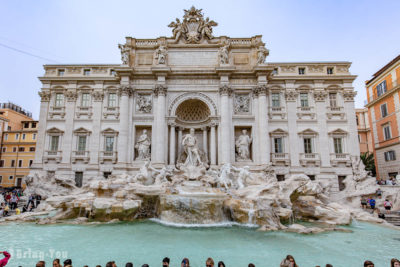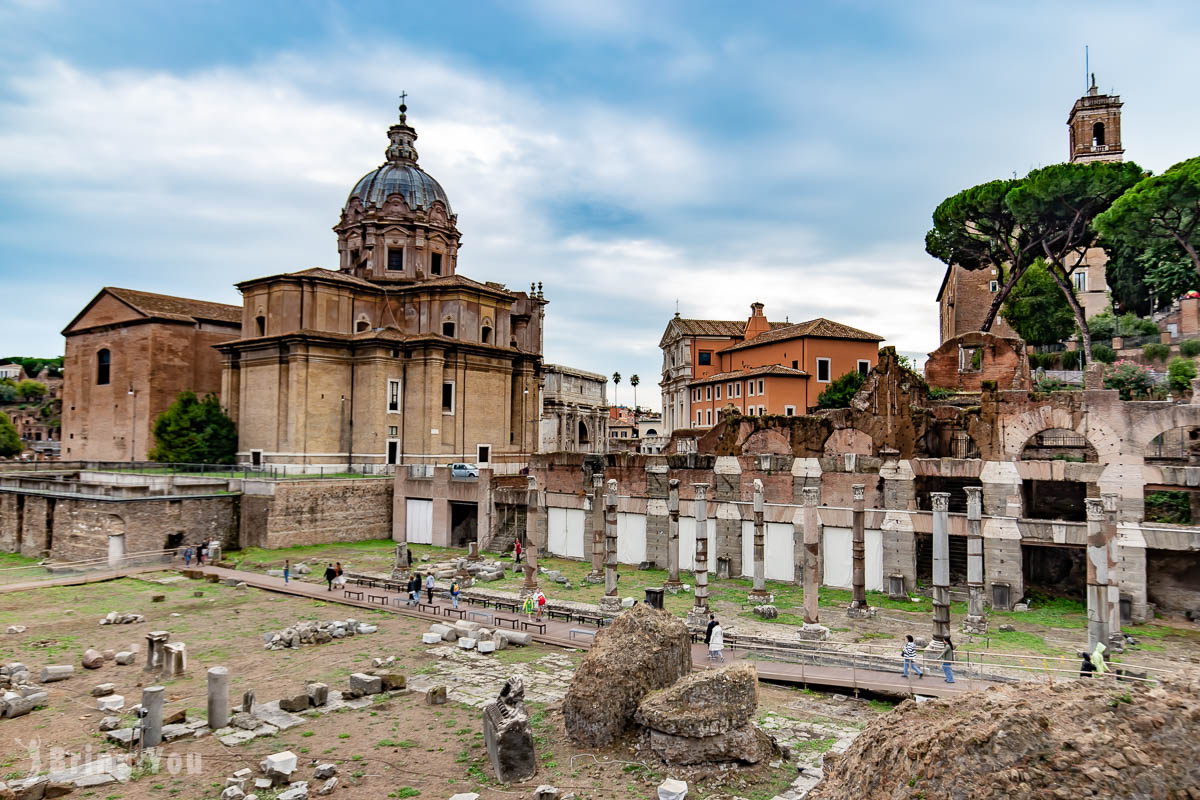
Oh Rome, the capital of Italy steeped in an eternal charm that wears its history like a finely tailored suit. From its ancient roots dating back to the 8th century BC to its stint as the epicenter of the Roman Kingdom and later as the grand capital of the Papal States and Holy Roman Empire, Rome’s legacy is etched in stone and history.
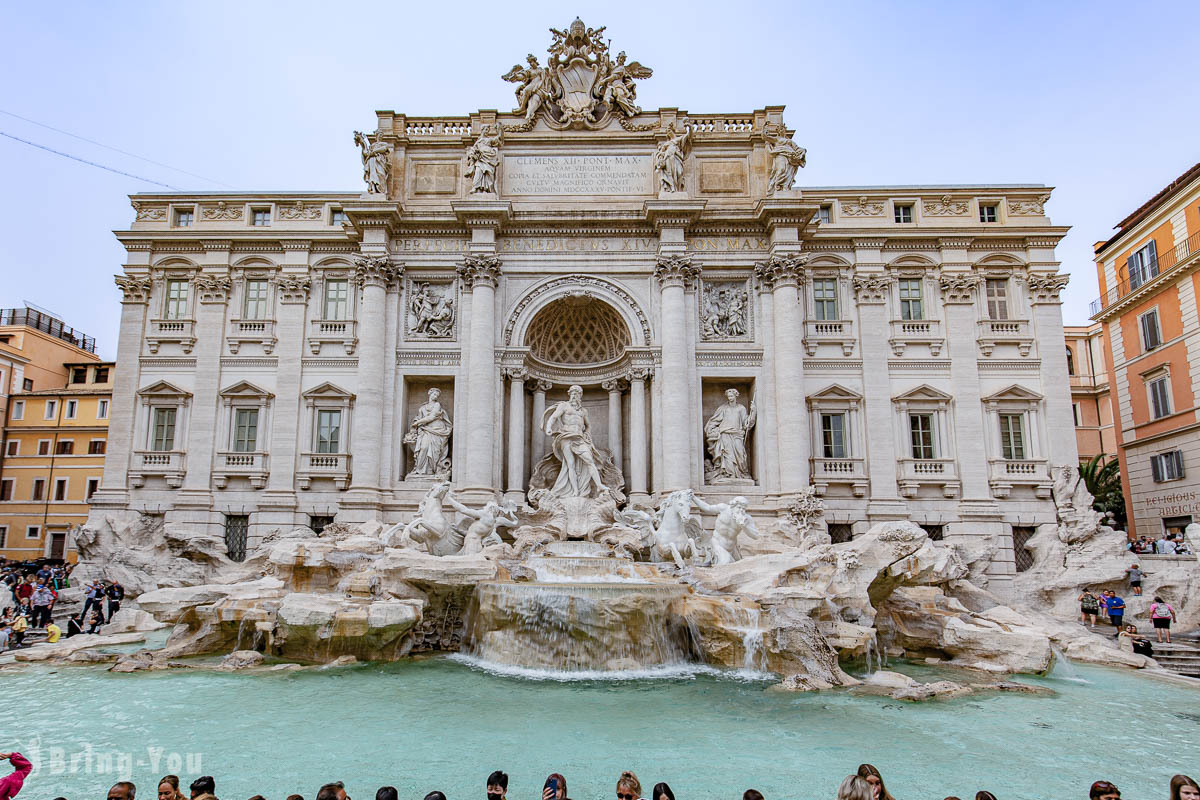
To make the most of Rome, a full week is my best answer. Unveiling the best things to do that Rome has to offer goes beyond archeological sites and temples. This city is a beautiful mashup of the finer things in life, from a hotbed of luxury brands and world-renown cuisines to the timeless charm of Renaissance and Baroque architecture. Every cobblestone whispers tales of the past.
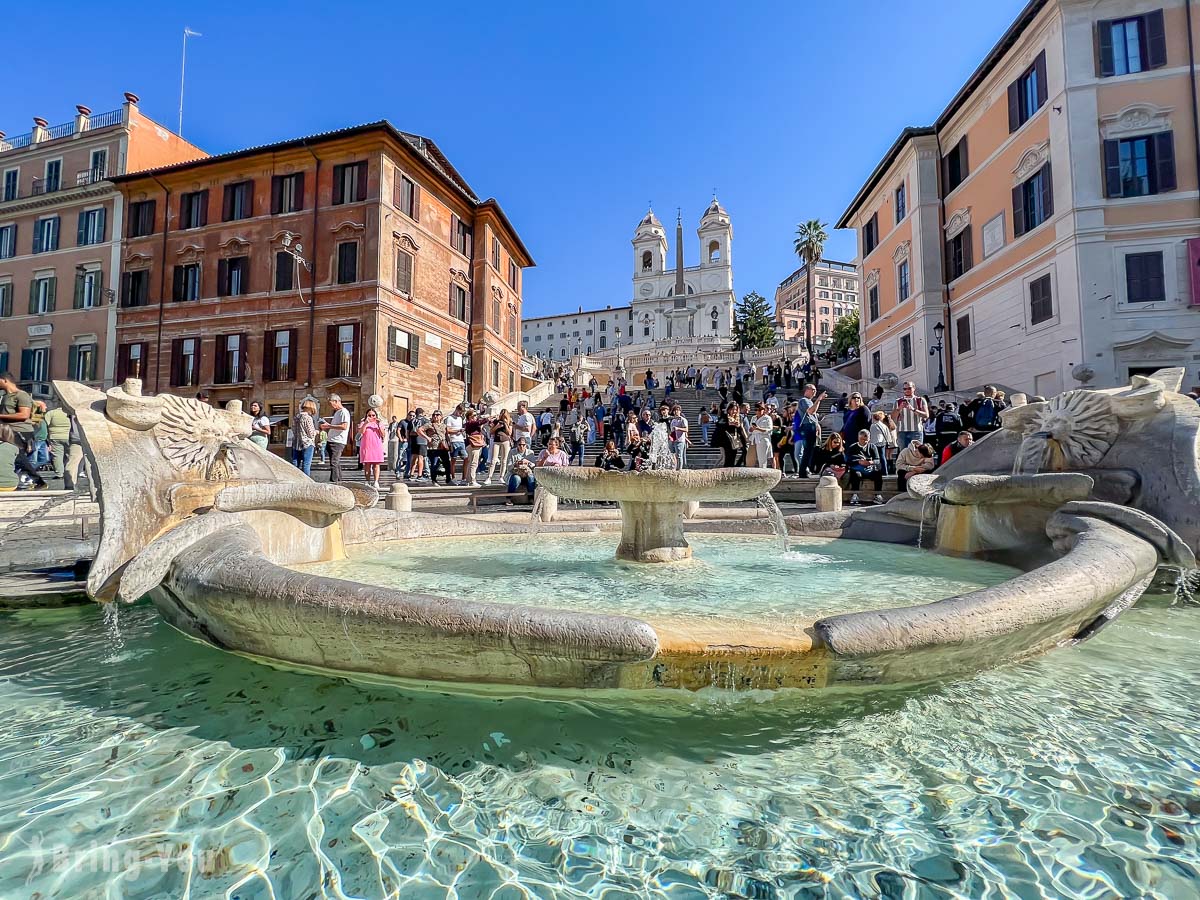
This article is my curated list of the 13 best places to visit in Rome you can keep as a guidebook. You’ll find everything from a rendezvous with history at the Colosseum to basking in the glory of Castel Sant’Angelo.
More on that below.
Fontana di Trevi (Trevi Fountain)
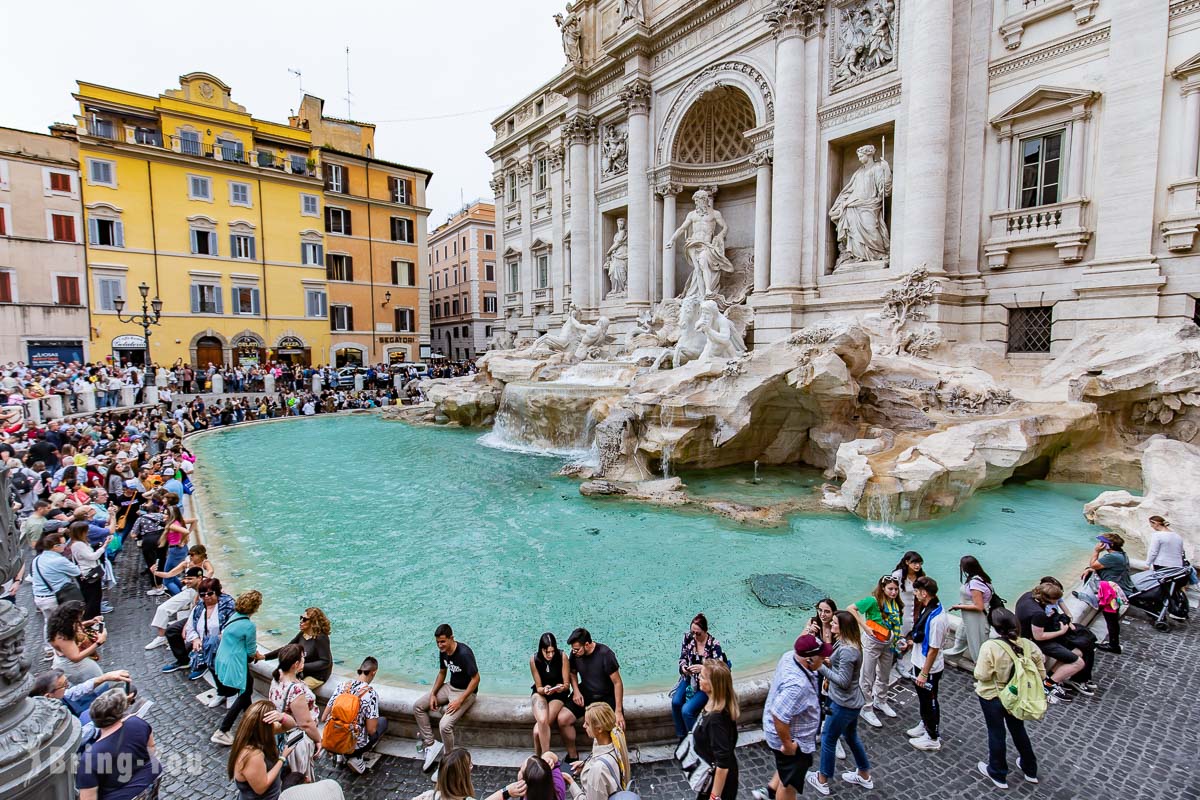
Undoubtedly the most talked-about fountain in Italy and one of the most drop-dead gorgeous fountains in the world, Fontana di Trevi is an absolute must-see when in Rome. Sitting smack dab in the heart of Quirinale district, Fontana di Trevi has been around since ancient Roman times after the Aqua Virgo Aqueduct was finished in 19 BC. The fountain sits at the end of the aqueduct, a T-junction where three different roads meet. For that reason, the fountain was named as such.
Despite the crowds, the water remains perfectly clear with a stunning turquoise color. A common practice here is to toss coins into the water and make a wish. Walk to the right of the fountain and there’s a water station for you to refill your bottle.
Pantheon
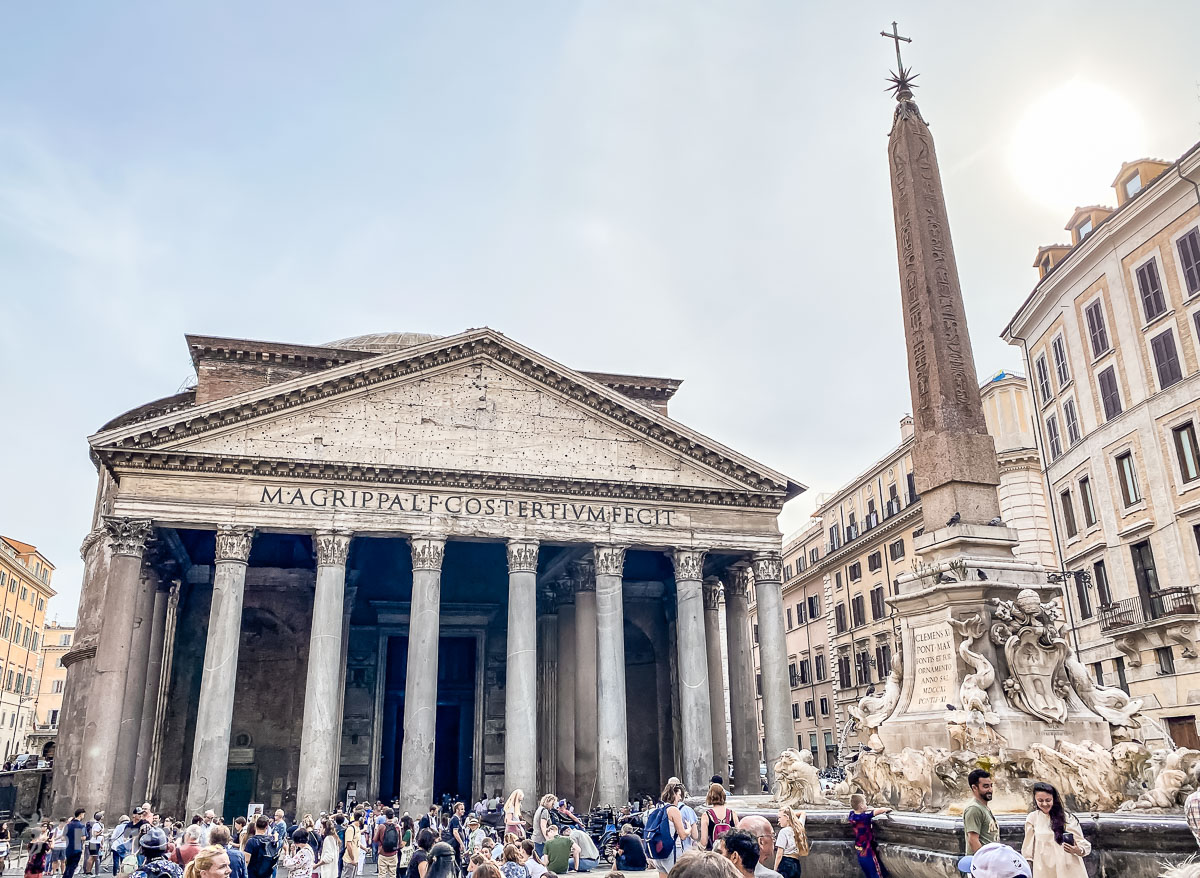
The Pantheon is inarguably the most iconic historical landmark in the world. Boasting a dramatic dome inside, the Pantheon features an Oculus at its heart to invite sunlight. Originally, the Pantheon acted as a religious temple dedicated to Pope Boniface IV.
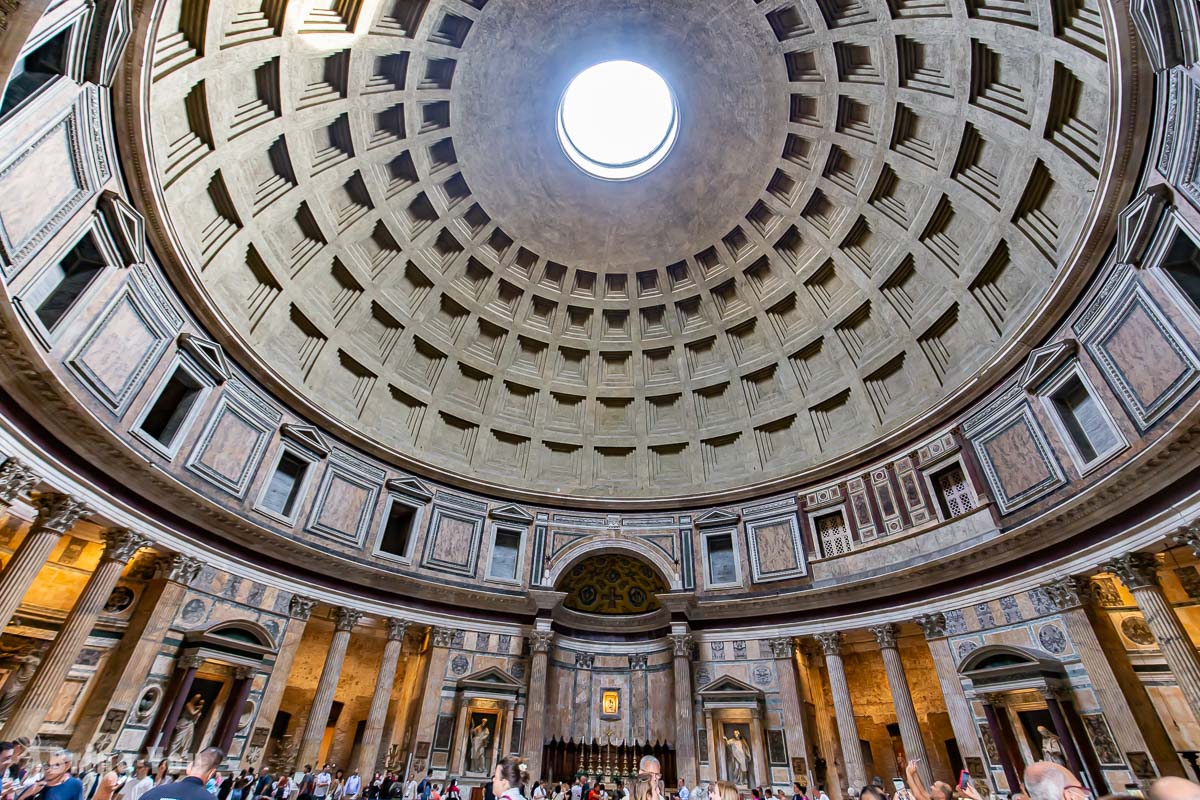
Today, this timeless piece of art remains a shout out to the world for its striking ancient Roman architectural art reflected through the perfect classical geometric proportions that even kept Michelangelo in awe. Each section of the building was imported from a different region, with the marble floor brought from Greece while the Pantheon columns came from Egypt.
St. Peter’s Basilica (Basilica di San Pietro)
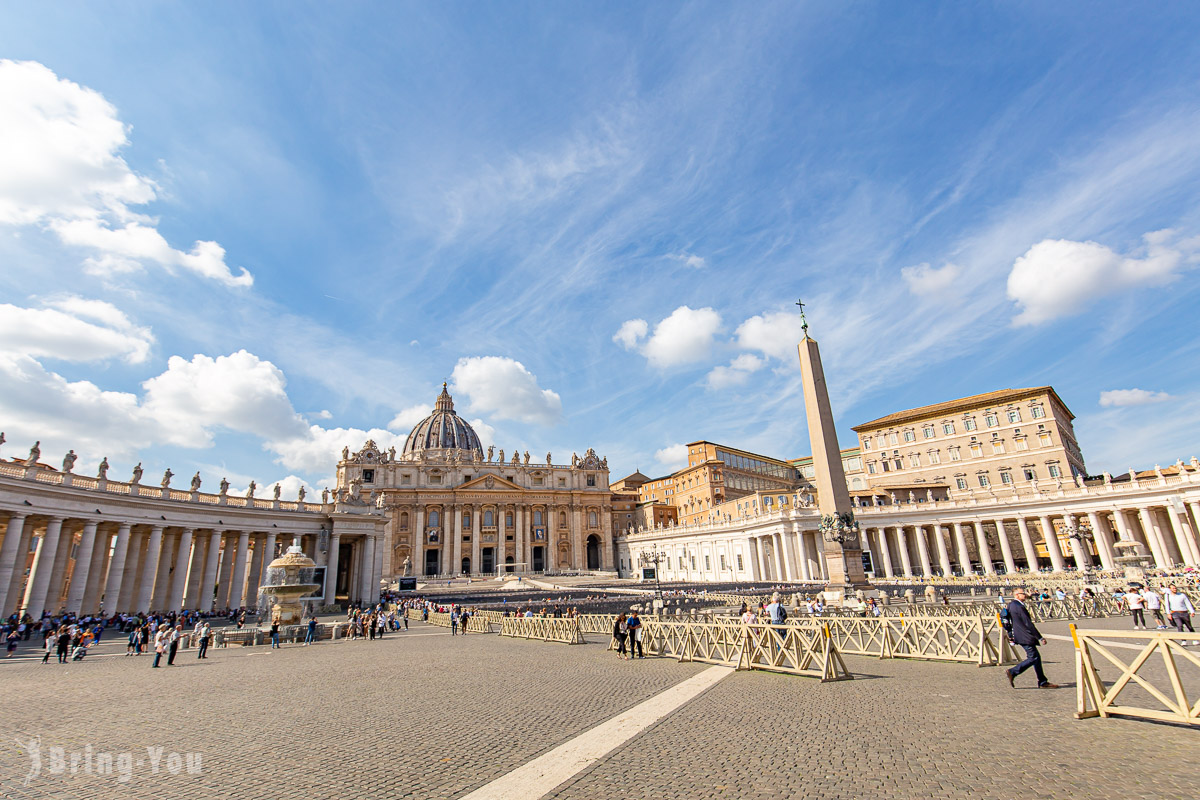
Making a statement as a typical Renaissance cathedral located in Vatican City, St. Peter’s Basilica has been going strong since 1626, receiving a standing ovation for its remarkable design with eyes to details. The entire space occupied 23,000 square meters, accommodating a total number of 60,000 people at once.
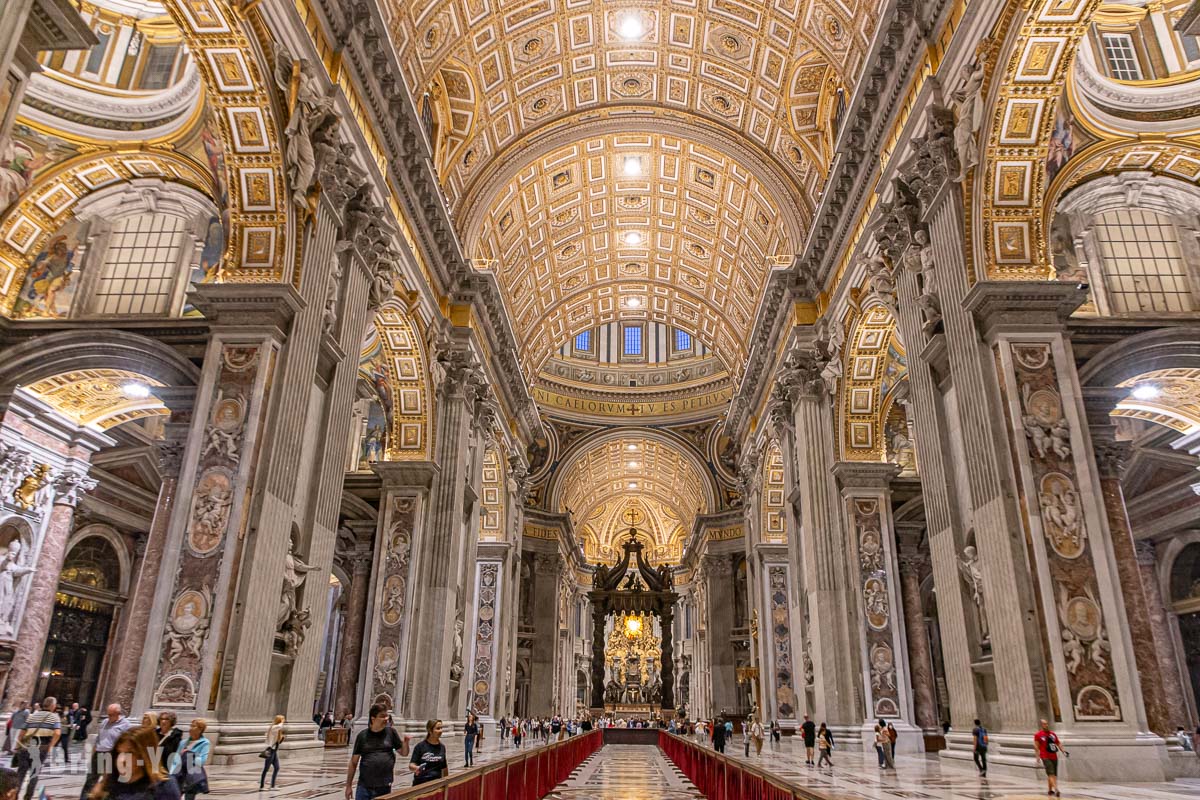
Today, St. Peter’s Basilica remains one of the largest churches in the world. It saw the hands of famous architects such as Michelangelo, Gian Lorenzo Bernini, and Raffaello Sanzio da Urbino leaving sights.
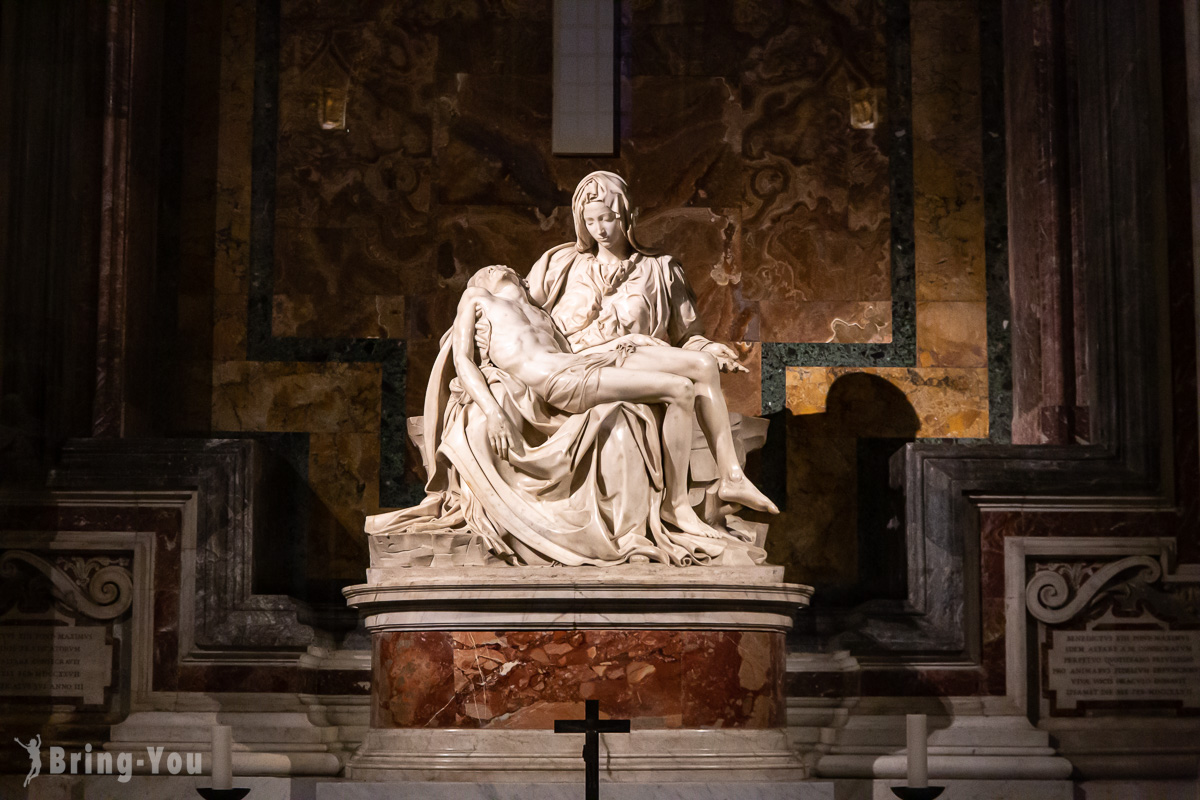
Musei Vaticani (Vatican Museum)
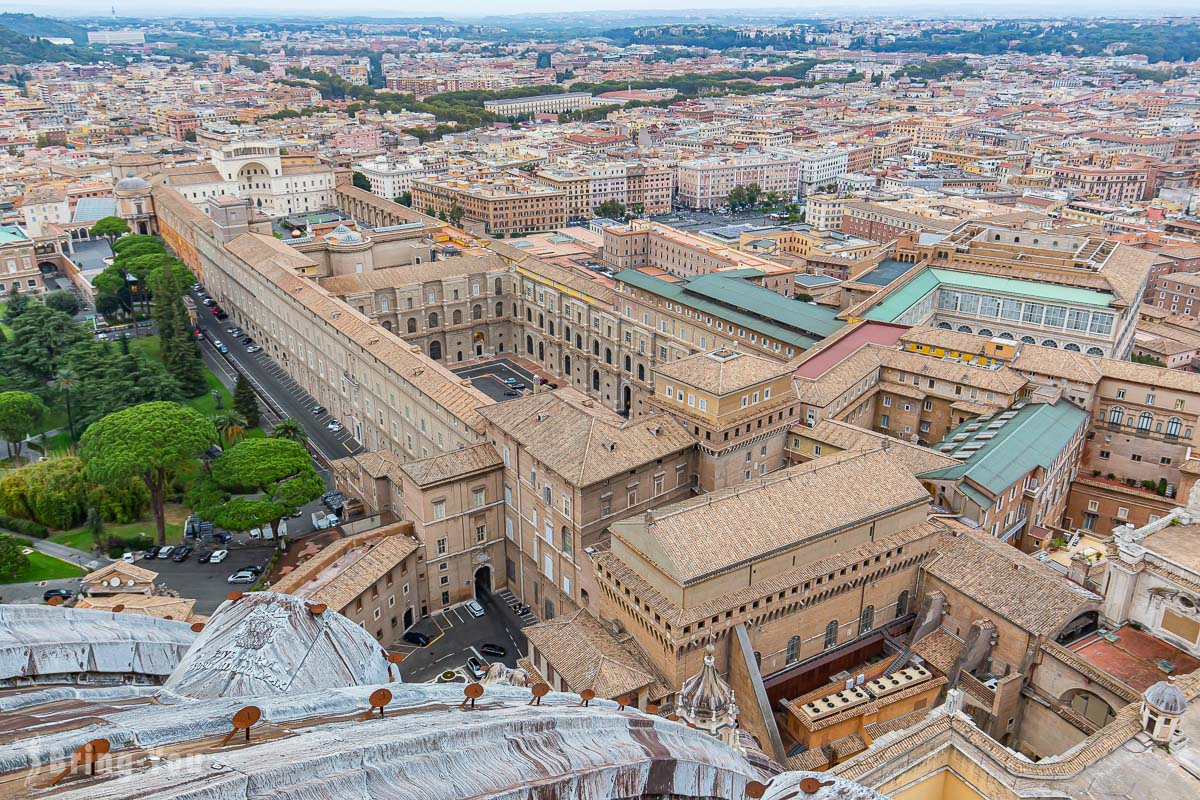
Start early and skip the line – that’s my best advice if you hit here for the first time. The collection at the Vatican Museum is like a time capsule of treasures collected and protected by the Popes and the Catholic Church for centuries.
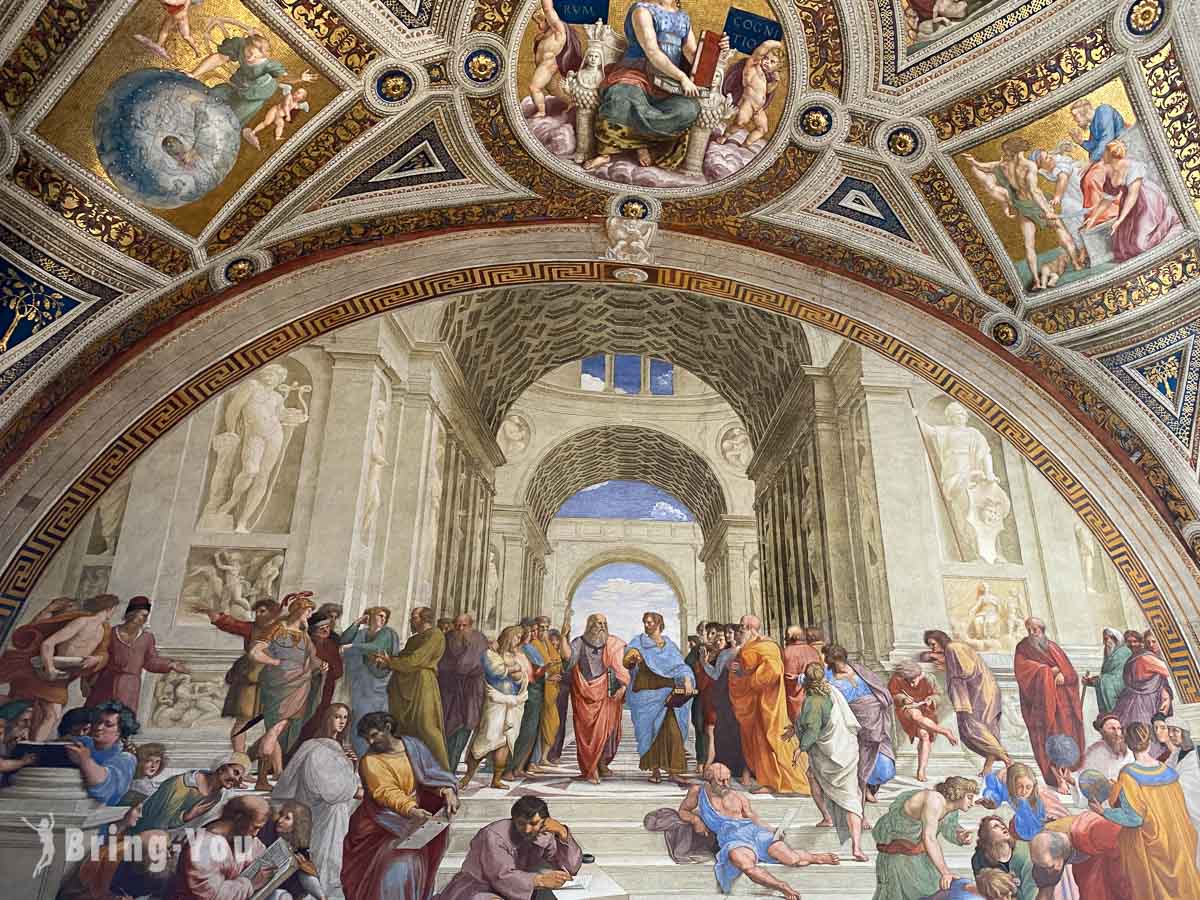
We’re talking ancient Egyptian relics, mind-blowing Renaissance art all the way to 20th-century gems, and the pièce de résistance, Michelangelo’s jaw-dropping creations. Those frescoes on the walls by Chiro and Raphael are simply Renaissance masterpieces.
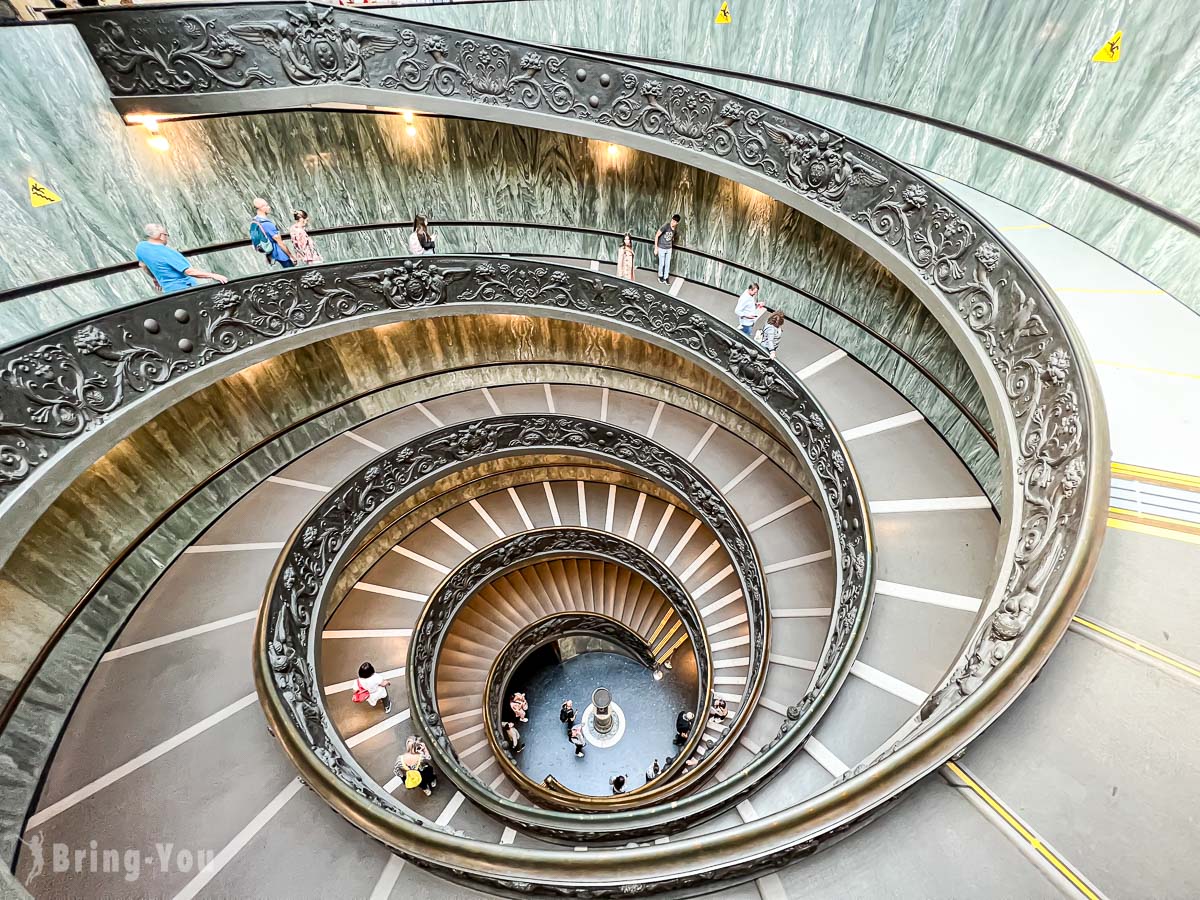
Here’s the insider tip: It can get steamy in there, and I’m not talking about the art. The air conditioning situation isn’t ideal, so if you want to keep your cool, go early. Snagging skip-the-line tickets beforehand and you’ll see yourself inside in no more than ten minutes.
Castel Sant’Angelo
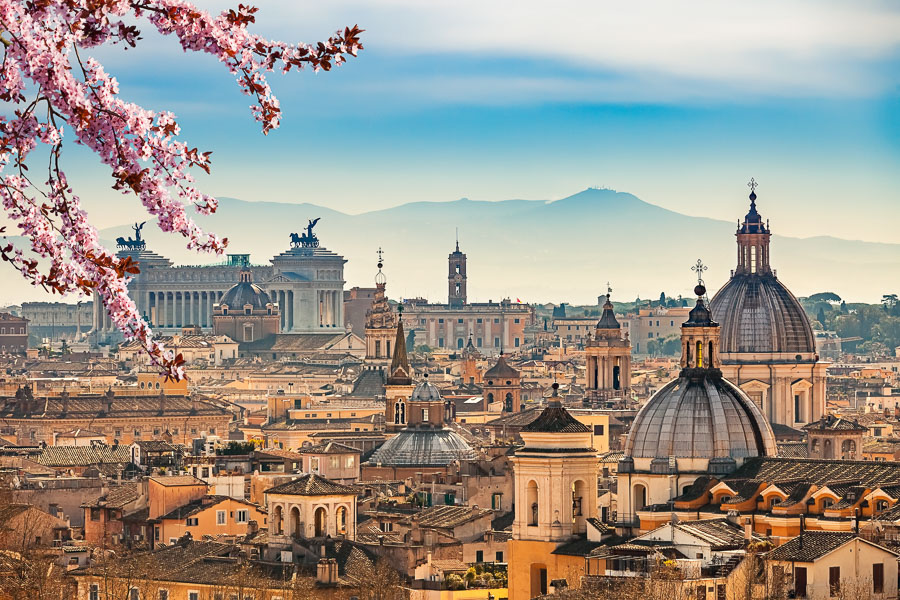
Though rough and bulky on the outside, Castel Sant’Angelo reveals exceptional beauty as well as an excellent Raphael-inspired art collection on the inside.
Right here, Castel Sant’Angelo sits the tomb of a Roman emperor while leftover cannons and cannonballs are perfectly preserved. You’d never imagine they keep a toilet made by Raphael for the Pope. Walk your way to the top and soak in the unobstructed view of Saint Peter’s Basilica at a distance.
A secret spilled by the locals is that there’s a hidden walkway connecting Castel Sant’Angelo and the Vatican City that’s open once in a while. At the end of the day, what truly makes this place special is the showcase of Roman architecture’s progression for nearly 2,000 years. All you need is a short walk from Vatican City.
Colosseum
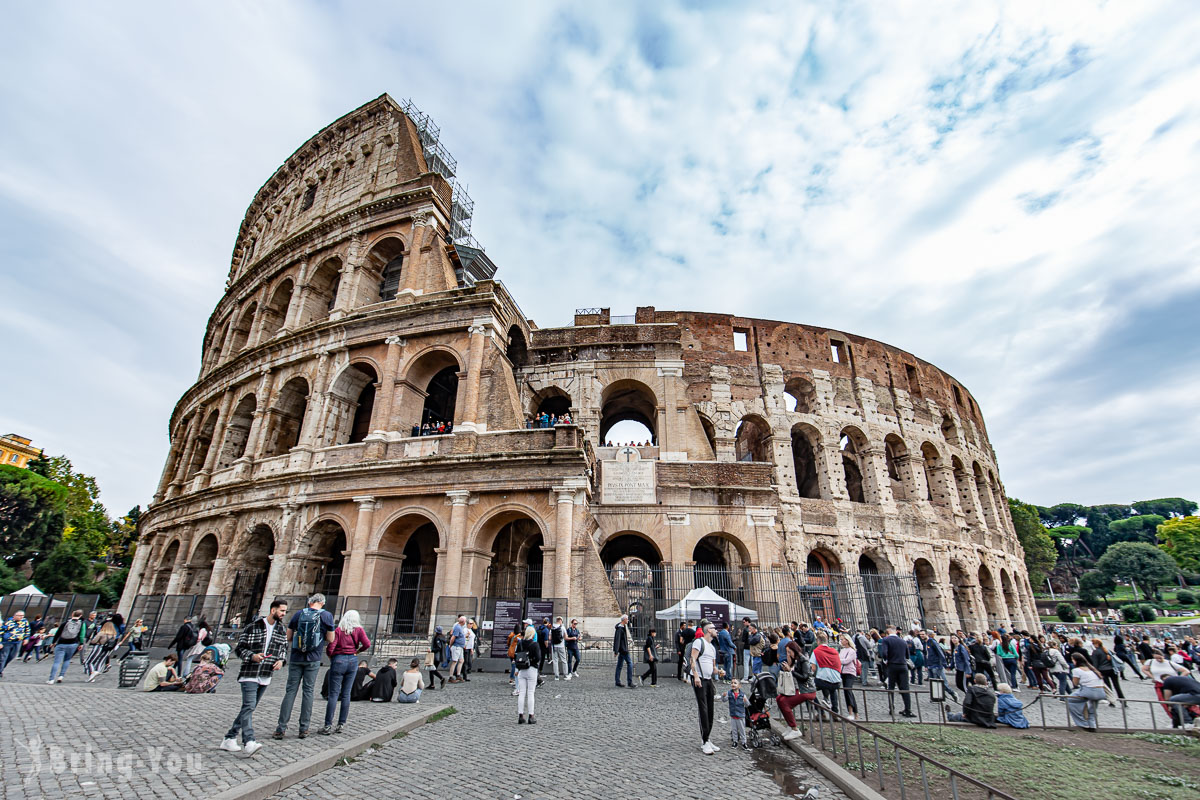
The Roman Arena, often referred to as the Roman Colosseum, is a marvel of ancient engineering. Standing the test of time since it was finished in AD 82, the Colosseum is the world’s grandest masterpiece of its kind.
Boasting a recognizable oval shape, the Colosseum holds a long axis measuring 187 meters and a short axis of 155 meters. Its impressive circumference spans 160 meters.
The central arena, once a stage for gladiatorial contests, executions, and dramatic performances based on Roman mythology, was the heart of the action. It’s said that this arena could host up to a staggering 80,000 spectators.
Over the years, it suffered damage from earthquakes and was plundered for its stone, yet it has endured as a testament to human ingenuity. Today, you can enter the site through different gates. There are various types of tickets to choose from. Each type covers different areas. Some are accessible on your own while others need a guided companion. Online tickets are needed and make sure you’ve obtained a Skip The Line option.
Foro Romano (Roman Forum)
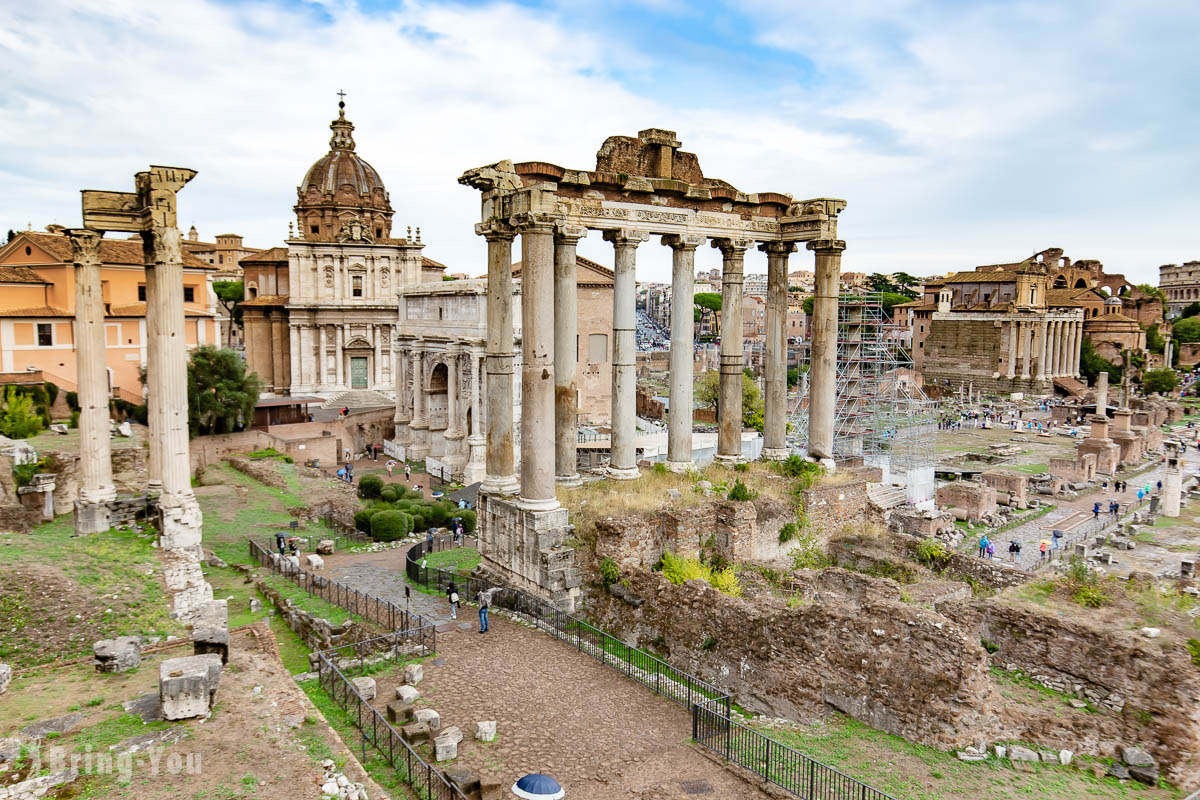
Just a few minutes’ walk from the Colosseum, the Roman Forum stands tall as a time capsule where ancient government seats took place in this low-lying area between the Capitoline and Palatine hills. Beyond imagination, the Roman Forum was built on an almost empty land, nothing else but a swampy abandoned area.
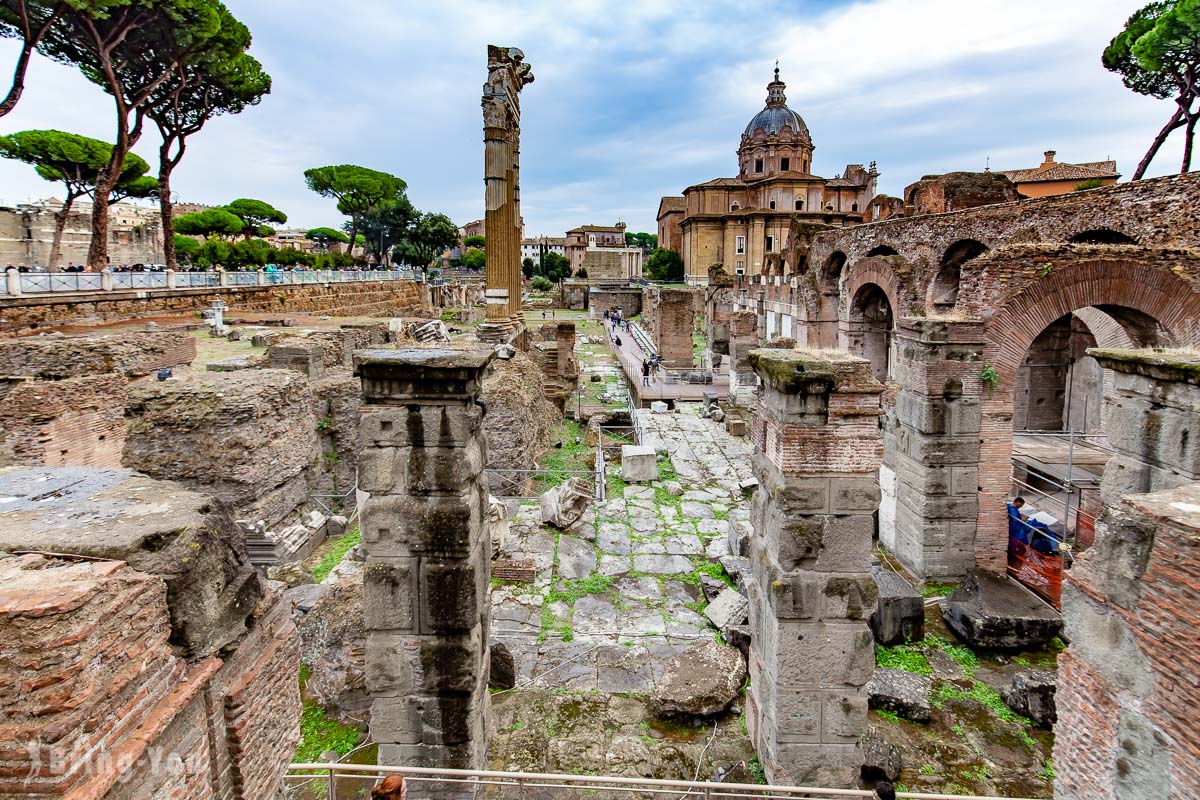
Though only the ruins are left behind today, having a guide with you will reveal so much about this excellent location where temples, courts of law, government halls, and public assembly areas of the Roman Republic once took place.
Roman Forum is an outdoor attraction so pack plenty of water along to avoid dehydration.
Piazza del Campidoglio (Campidoglio Square)
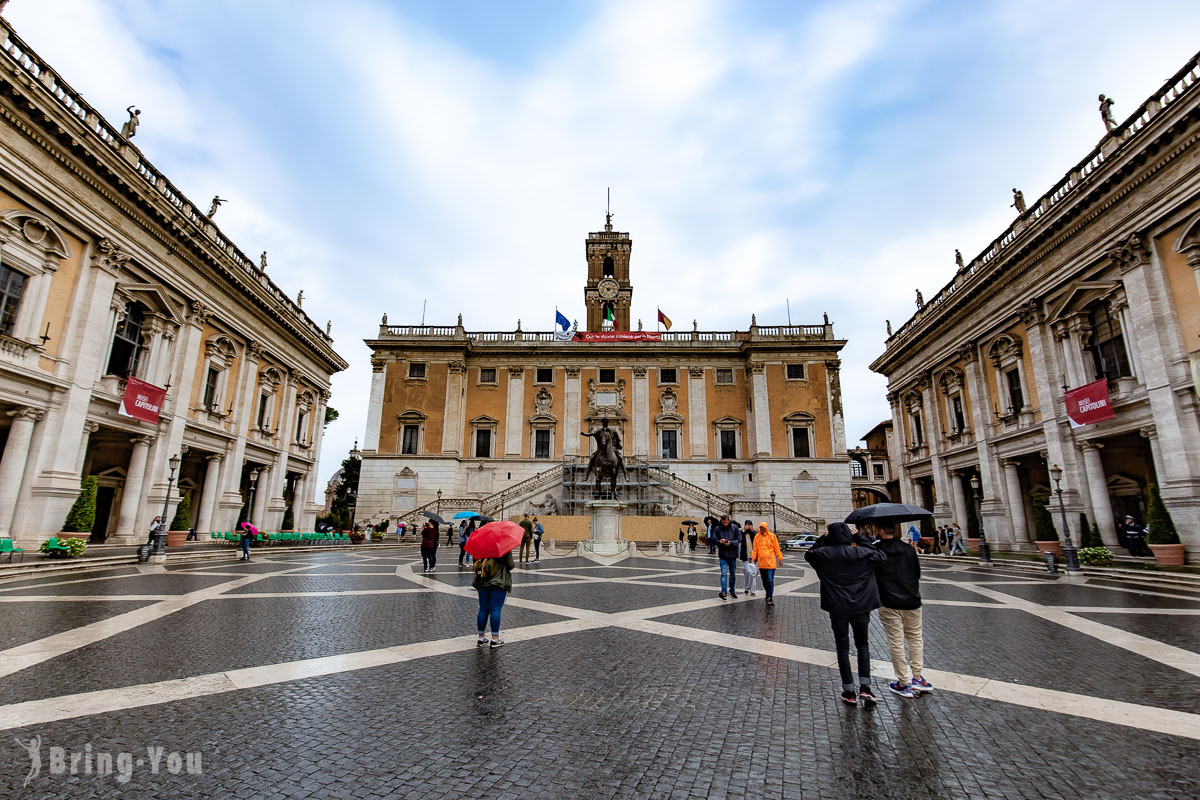
This place is like the epicenter of the city’s history, and it’s the last standing Renaissance square in Rome.
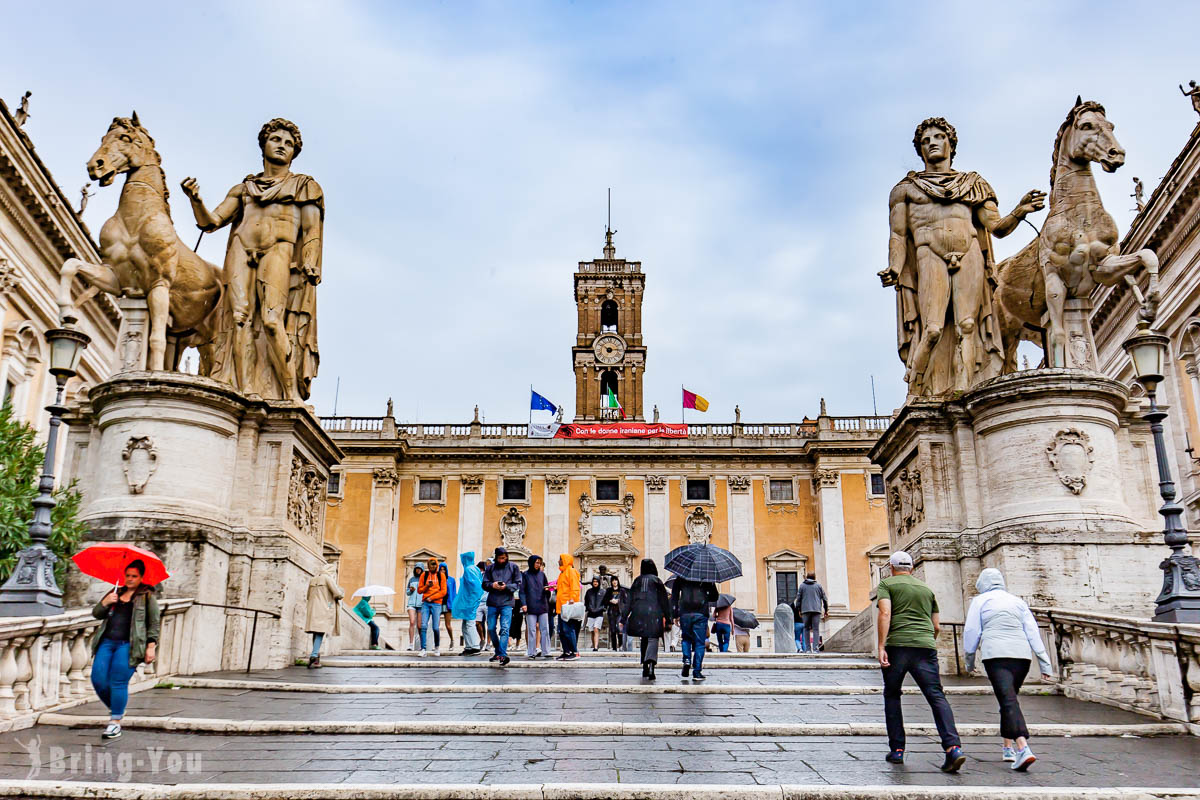
Back in ancient times, this spot was where all roads led. The Romans came to throw epic victory parties after their conquests. Today, Piazza del Campidoglio is snuggled by the scenic Capitoline Hill where the Temple of Jupiter Optimus Maximus draws crowds as a big shot among Roman gods. People flock here to worship and offer up their sacrifices.
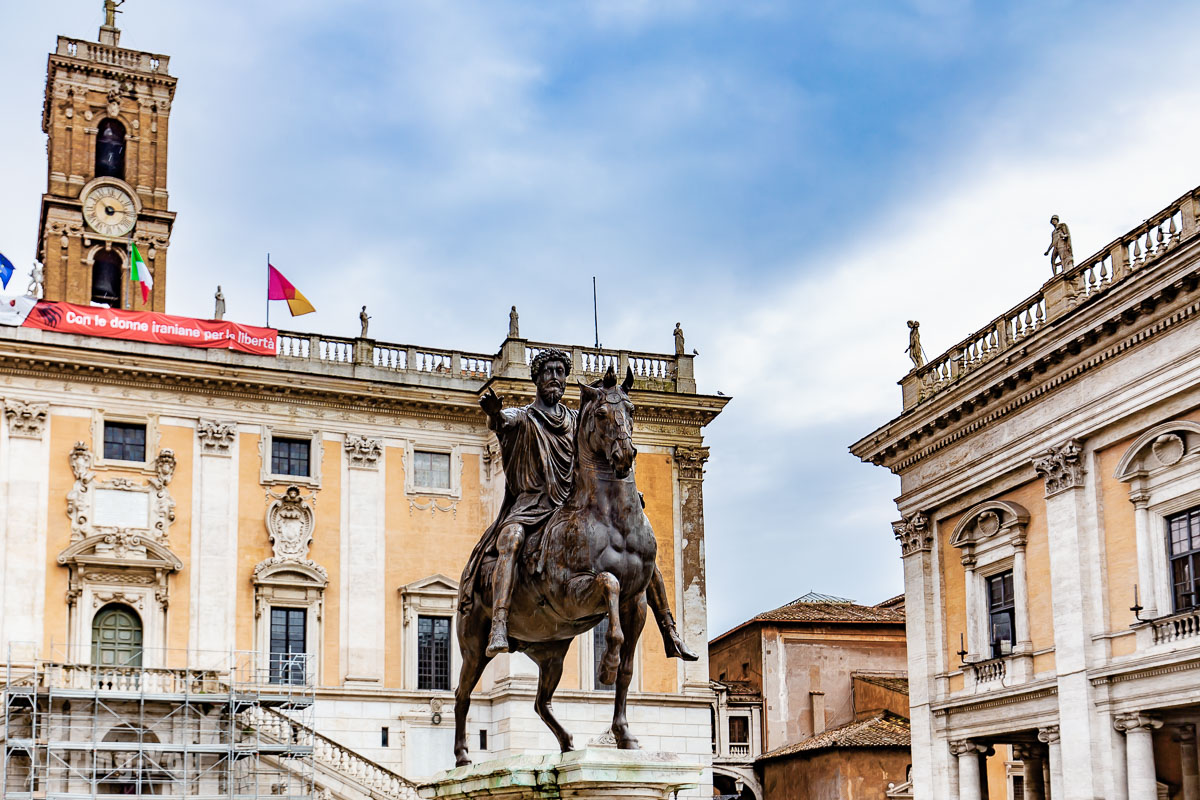
Palatine Hill
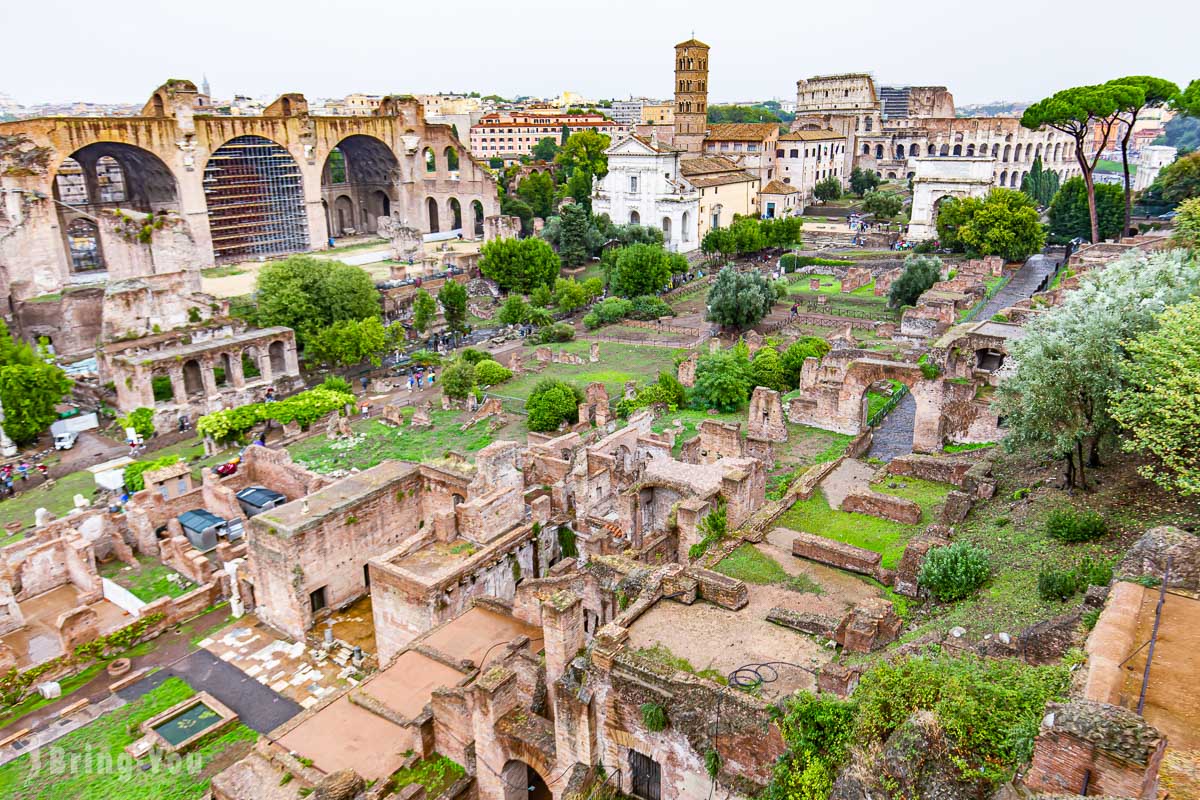
If you’re curious about Rome’s very beginnings, the Palatine Hill is where it all started. Just a minute’s walk east of Piazza del Campidoglio, Palatine Hill is believed to be the spot where Rome was first founded. Here, you’ll get to explore the opulent villas of Roman emperors, quite the view into ancient luxury living.
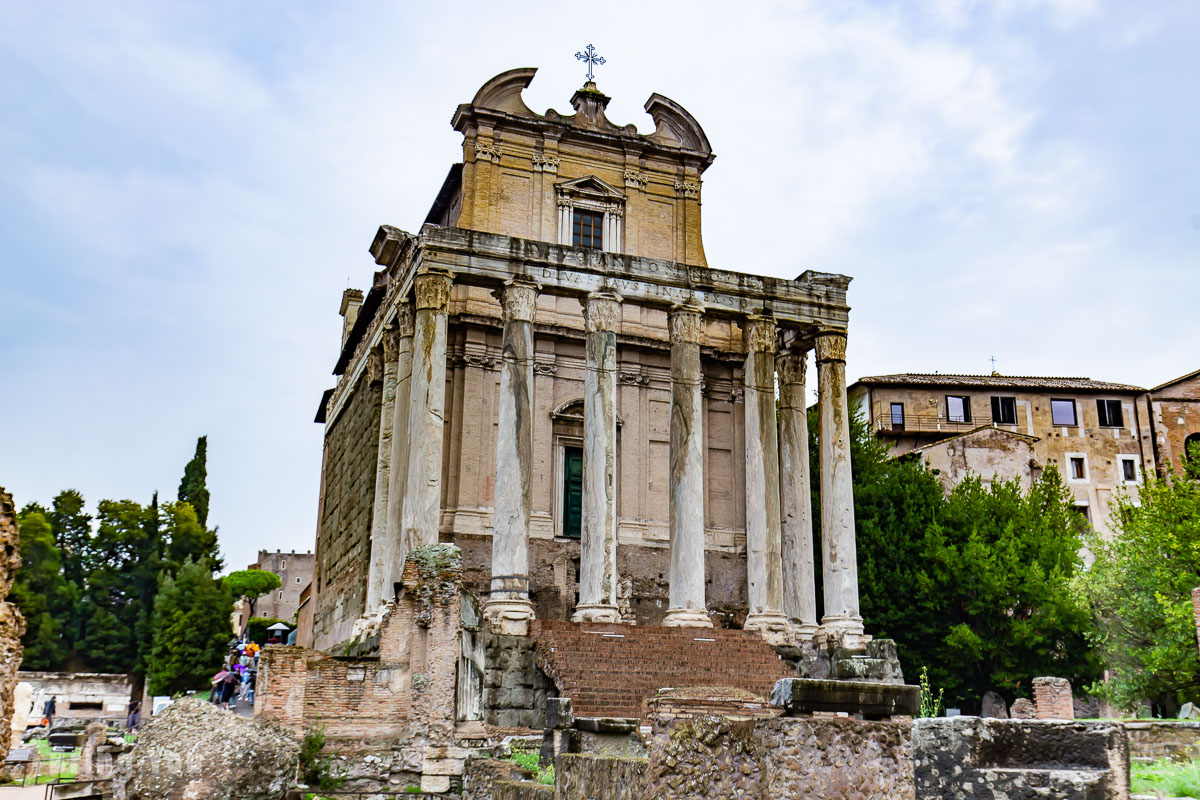
Visitors find it handy to obtain a combo ticket that covers the Colosseum, Roman Forum, and Palatine Hill. After your Colosseum adventure, follow the signs to Palatine Hill.
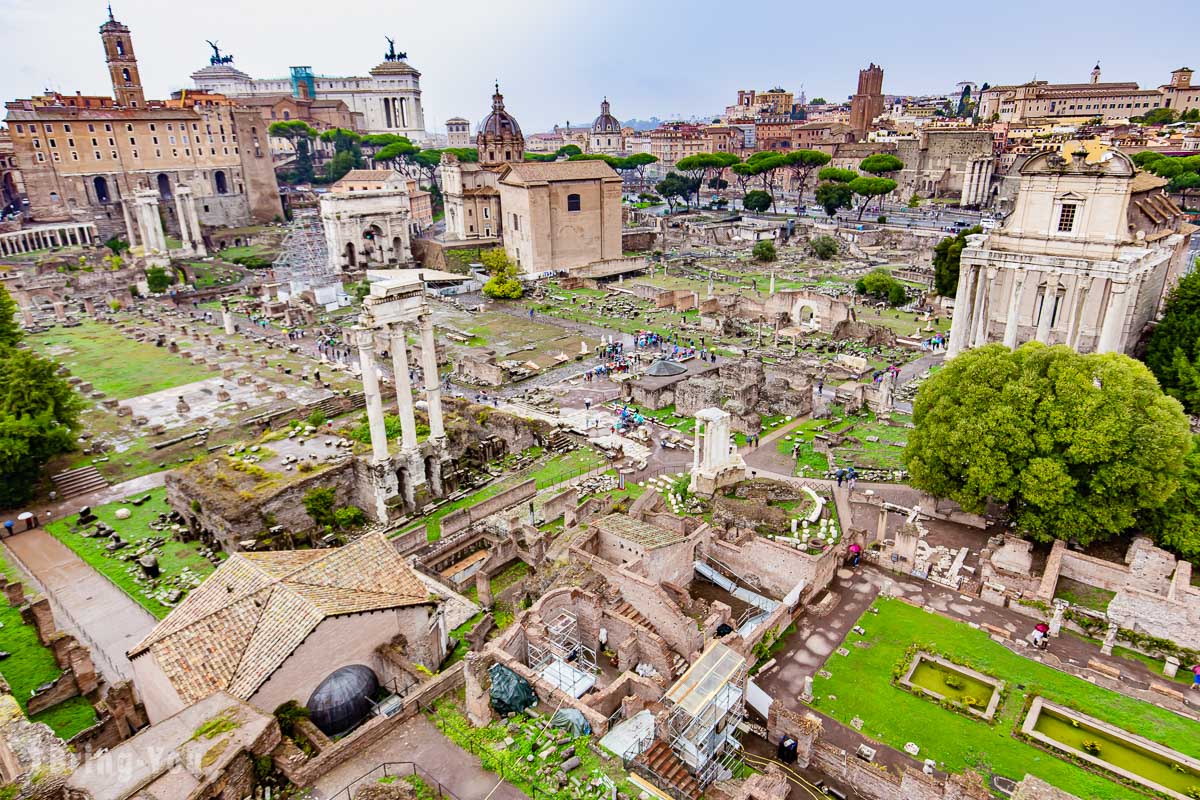
There are different paths to explore, and one of them takes you right to the Forum. Once you’re there, a maze of historic wonders is waiting for you with a hidden observation deck perched above the hill’s peak.
Mercati di Traiano Museo dei Fori Imperiali (Trajan’s Market)
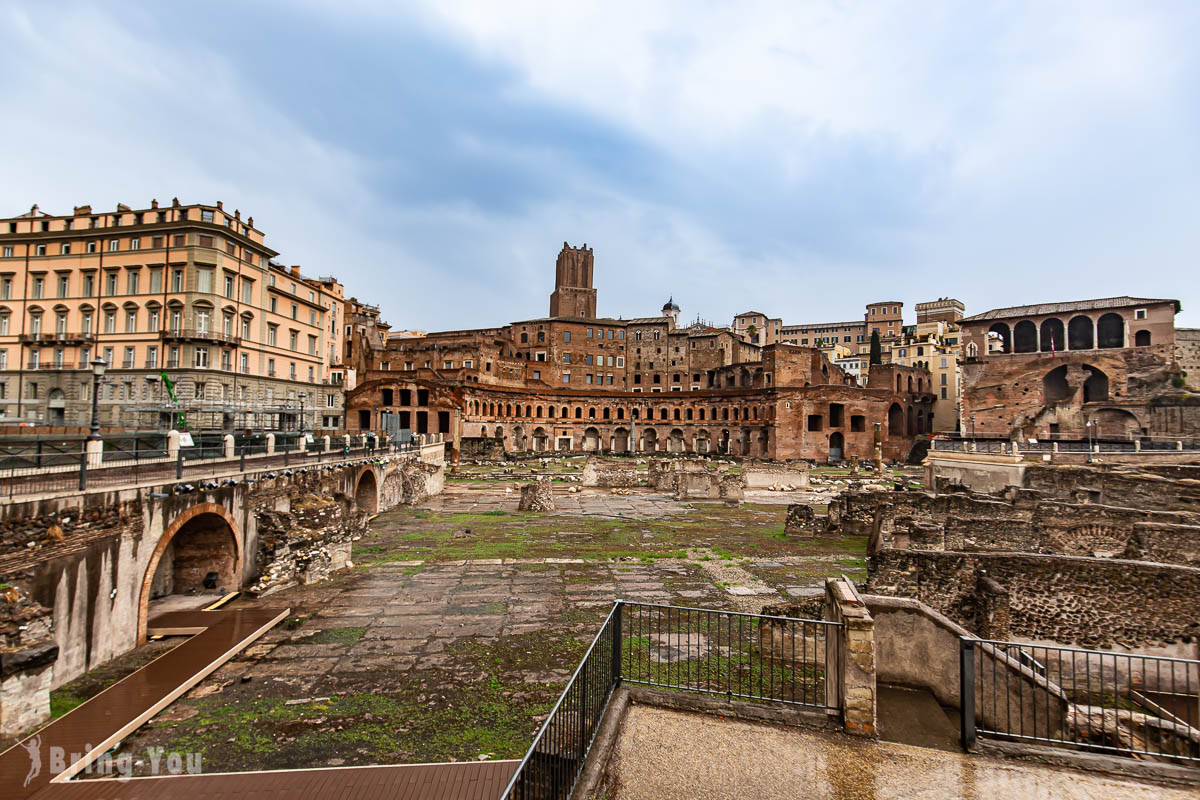
Wondering what trading in ancient Rome was like? Live it up to Trajan’s Market for a piece of history. These markets were constructed during the reign of Emperor Trajan between 100 and 112 AD. They form a semicircular complex comprising more than 150 shops and offices. You can find them right next to the Trajan Forum, which shares its name.
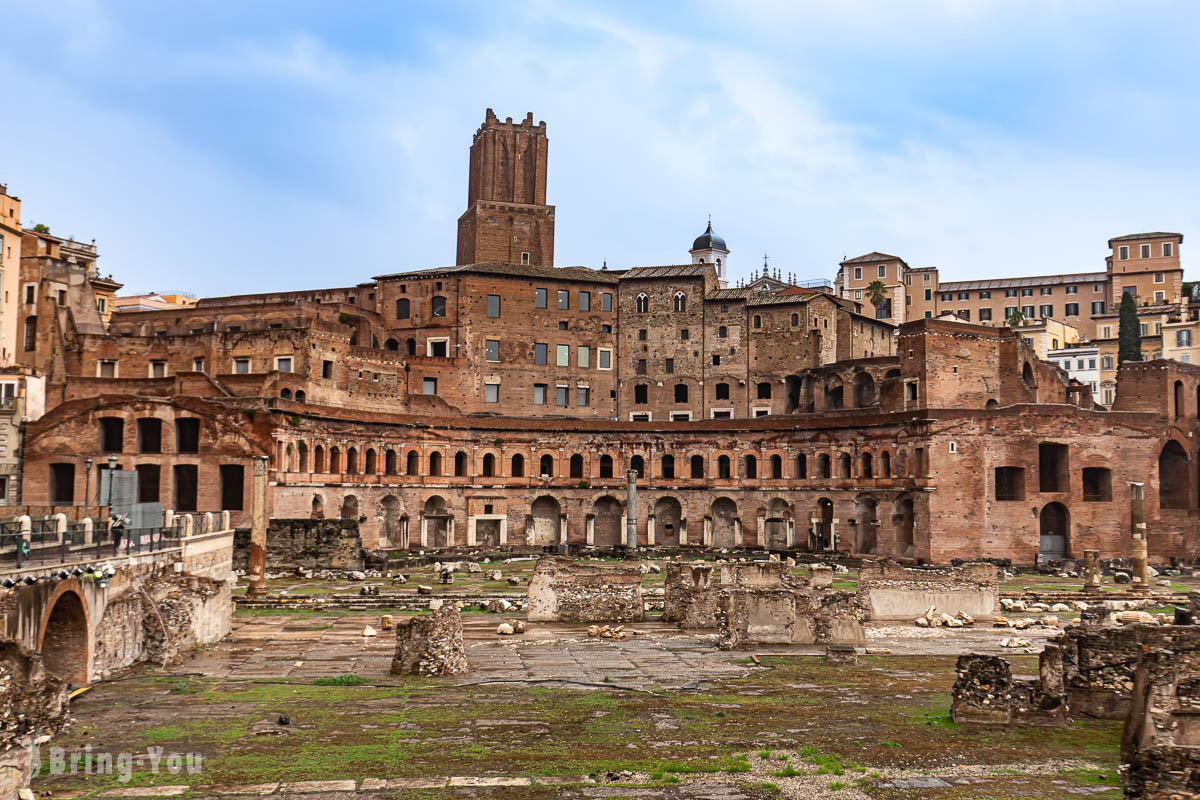
The washed-out ruins cannot conceal the bustling feel of this once-famous hub of commerce. Right on this ancient floor, people traded all sorts of goods ranging from horticultural products to exotic spices and essential commodities like oil and wine.
Piazza Venezia
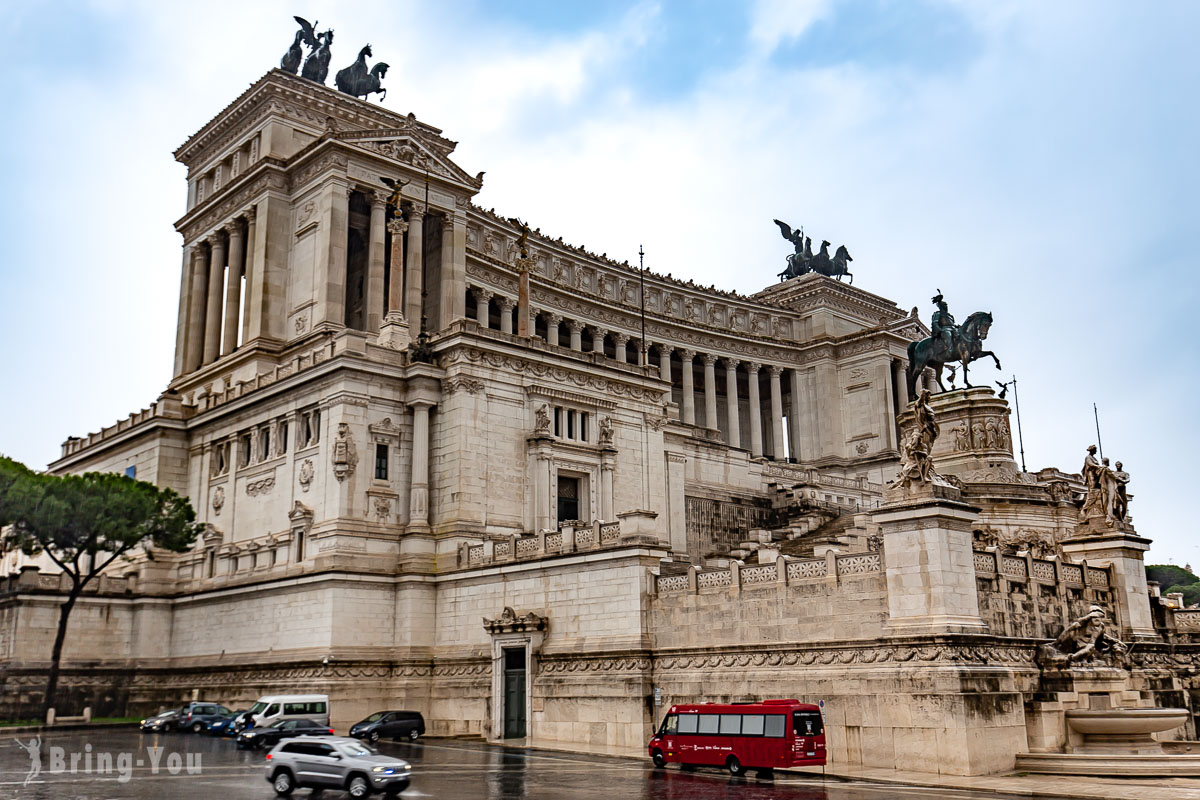
Capping the top of Capitoline Hill, Venezia is a bustling public square located smack dab in the city core. This lovely gathering point is a convergence of heritage buildings and an old-established church where you can take it slow and watch life go by.
One of the most photographed buildings here is Monumento Nazionale a Vittorio Emanuele II built to pay tribute to Victor Emmanuel II, the first king of Italy. There’s a viewpoint on top that boasts an unparalleled vista of the capital city.
Another highlight of the square is the scenic Capitoline Hill itself, home to the stunning cathedral of Santa Maria. This heritage church has been around since the 6th century. If your fitness level agrees, climb to the top of the church to admire the old ceiling up close and soak up the aerial perspective of Rome.
La Bocca della Verità (The Mouth Of Truth)
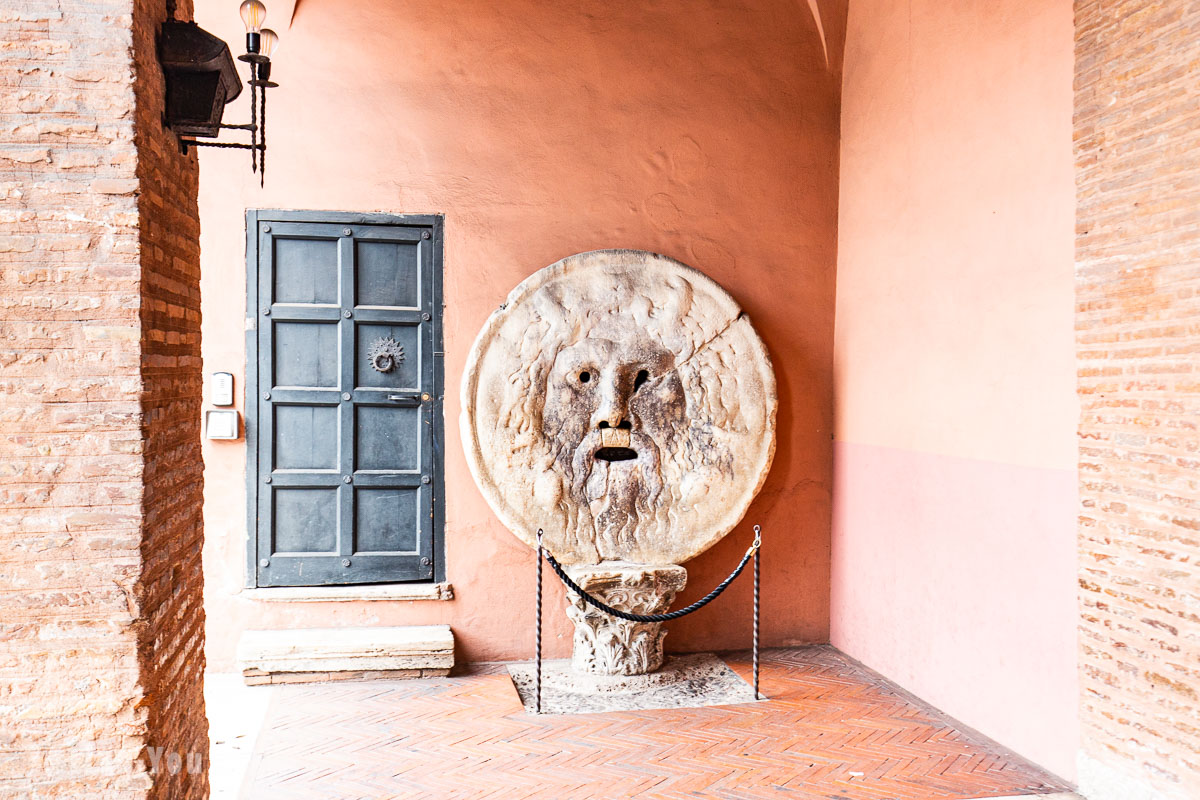
Rather than a destination, The Mouth of Truth is a marble mask left hanging on the wall of the portico of the Santa Maria in Cosmedin church.
Made famous by the Hollywood blockbuster Roman Holiday starring Audrey Hepburn and Gregory Peck, the Mouth of Truth features an open mouth that’s supposed to cut the hands of those saying falsehoods.
Final Words: Is Rome Worth Visiting?
Rome’s attractions are like neighbors living down the street. With a good pair of walking shoes and some stamina, you can stroll from one to the other in a matter of minutes. You can easily stretch your stay to four days and three nights, exploring Rome’s historic nooks at your leisure. Trams might save you a hop or two, but the pure joy of ambling through Rome’s charming streets is an experience you won’t want to miss. Rome rewards those who linger.
